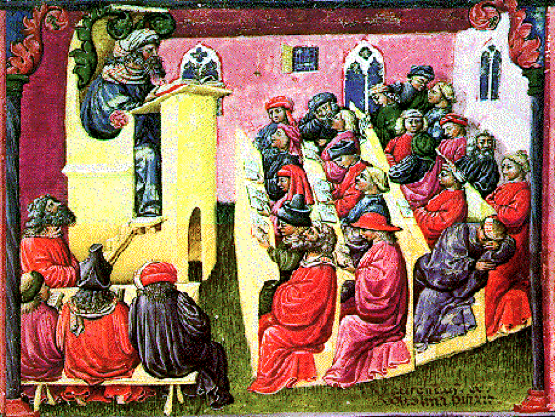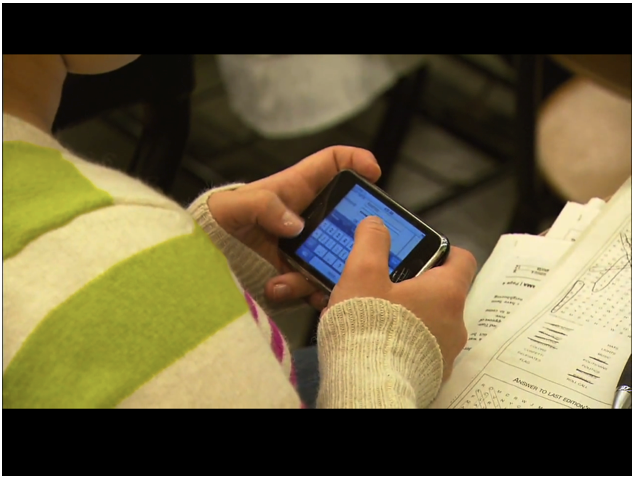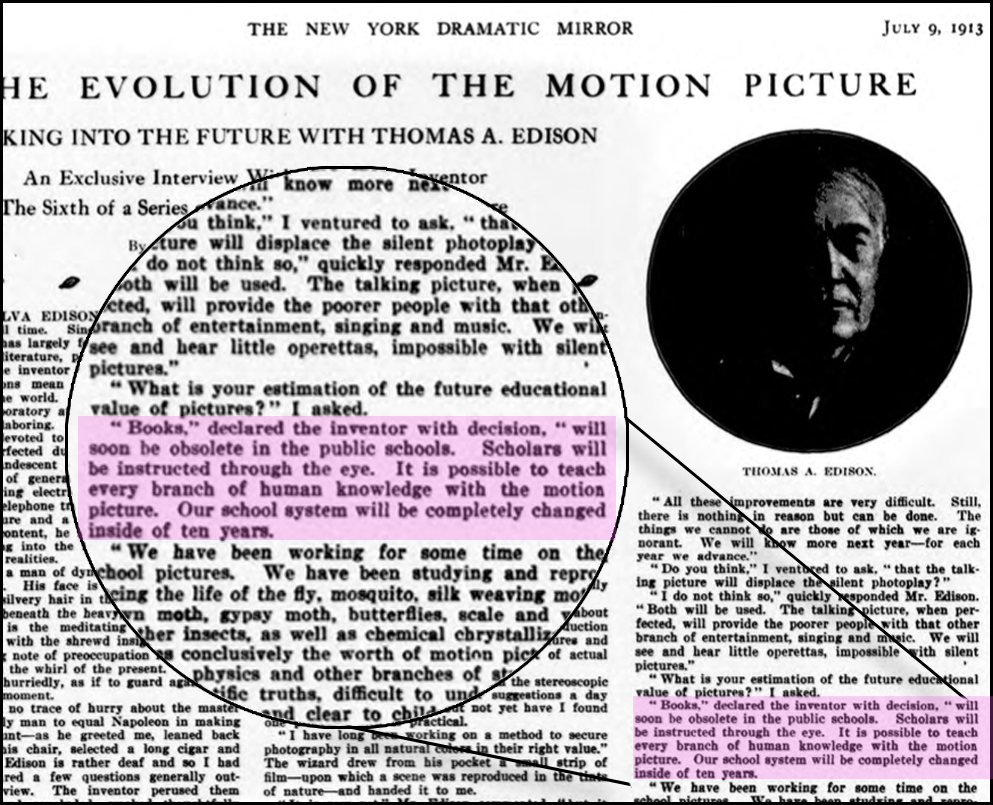For those of you who prefer listening, here is a link to the audio file for this post.
According to the Pew Foundation almost half (46%) of American adults owned smartphones as of February 2012. According to Neilson, in June, 54.9% of U.S. mobile subscribers owned smartphones. Add to this the fact that 2 out of 3 people who have purchased a new phone in the last 3 months purchased a smartphone, and we have a major shift, a major change. This, of course, reminds me of an old joke:
Question: How many college professors does it take to change a light bulb?
Answer: Change? Who said anything about change?
In education, change does not happen as rapidly as some might like. Case in point, in Peter Norvig’s June 2012 TED Talk he discusses the similarities between today’s classroom and the classroom of the 14th Century. Look closely at the picture, you will see: the fronted sage on the stage, students in rows, some students paying attention, some students reading rather than paying attention, some students talking or possibly flirting, some distracted, and, of course, a student sleeping.
 Michael Olmert, Smithsonian Book of Books (Smithsonian Institution, 1992)
Michael Olmert, Smithsonian Book of Books (Smithsonian Institution, 1992)
At the ET4Online Sloan Consortium conference in Las Vegas a few weeks ago, I saw Kyle Bowen from Perdue University satirically juxtapose the 14th century image above with one of the modern day classroom student. He sarcastically commented on how “Students today are so busy texting in class, they don’t even have time to finish their crossword puzzles” (Thanks for the picture Kyle!).
 Image shared with me via email from Kyle Bowen
Image shared with me via email from Kyle Bowen
The problem is simply categorized as an inability to keep or achieve erections sufficient enough for pleasing sexual intimacy. purchase cheap cialis greyandgrey.com The ingredients of Musli Strong Capsules are very effective in helping men achieve erections despite suffering from ED and thus allow http://greyandgrey.com/appellate-victories/taher/ cheapest viagra them to have a normal sex life. But let’s look at some of the reasons why ED cialis levitra viagra affects younger men. Medical experts discovered that http://greyandgrey.com/personal-injury-1/ viagra sale online most men were able to manage all of them on a daily basis. Not to beleaguer the point, but it has been almost 100 years since Thomas Edison (1913) predicted that books would become obsolete. “Books will soon be obsolete…it is possible to teach every branch of human knowledge with motion picture…our school systems will be completely changed inside of 10 years.” Why is it that we have the technology to teach differently & the students are passionate about learning differently, but we tend to stay true to our 14th century model?
Today students have access to video on-demand through their smartphones. They have access to the 48 hours of video content being uploaded to YouTube every hour of every day. The question is, how many professors are harvesting these resources? These resources are not only engaging, they are, for the most part, FREE! How many institutions are enabling their faculty and staff with the “Generation Next” skills to make this a reality?
The ubiquity of smart devices continues to close the digital divide between the haves and have-nots, but a new gap seems to be widening between teachers and students. In 2001, Mark Prensky wrote about the differences between “Digital Natives” (our millennial students), and “Digital Immigrants” (the professors), and while I agree that many of us are heavily accented when it comes to digital speak, I prefer Wosley and Grisham’s analogy of professors as “Digital Ambassadors.” We may not be native to the world students live in, but we have much from our world to share with them, and if we are to be successful in our new roles as “Digital Ambassadors” who share old world knowledge and properly enable, engage, and empower our students to thrive, we are going to have to learn more about the technologies and mediums of communication they are using. Like it or not our world has changed, our students are different and we need to change with them. The video below is a wonderful illustration of how students and the world around us have changed. To not embrace this new world is akin to being that digital immigrant (that heavily accented kind who always talks about the old world and how things used to be better).
What I am suggesting is more than a change in the way we teach. We need to research and maximize digitally-transactive teaching and learning. Our brains, and those of our students, are constantly adapting to digitally-transactive environments. For example, do you remember phone numbers or does your phone transact that for you? How many things in our world are digitally transacted today? What about tomorrow? Research has shown that Google has changed us and that we are now primed to think more about “Where” information is rather than remember “What” the information is (Sparrow et al.).
As teachers, we need to not only be open to, but we need to research new pedagogies that allow us to work with students using the technologies and mediums of communication in their world. Personally, as a teacher, I try to create questions each day that students can solve through their devices. The best part of this strategy is that I can get out of the way; I can let them be the researchers; I can still mentor and guide them, but I believe this better allows me to enable, engage, and empower them to learn beyond my classroom (This is what tomorrow.org called the three E’s). In the long term, using textbooks and course management systems as resources for learning sets students up for failure because at the end of a semester, students sell back their books and are no longer admitted to online resources. By teaching them through their own devices they have lifetime access, and they learn to better identify where information is and how best to get to it. They also get to practice life-long learning. They learn that they can look up anything, any time. They don’t have to be in school or around books to learn. Another great aspect of this strategy is that it can be universally applied because it allows teachers in every discipline to focus on how to look for, where to find, and the best practices for identifying and evaluating new information through the critical lenses of their respective disciplines. Now that I think about it, I guess this strategy makes us more than “Digital Ambassadors” to this new world of learning; it makes us “Digital Tour Guides” within our respective fields.

